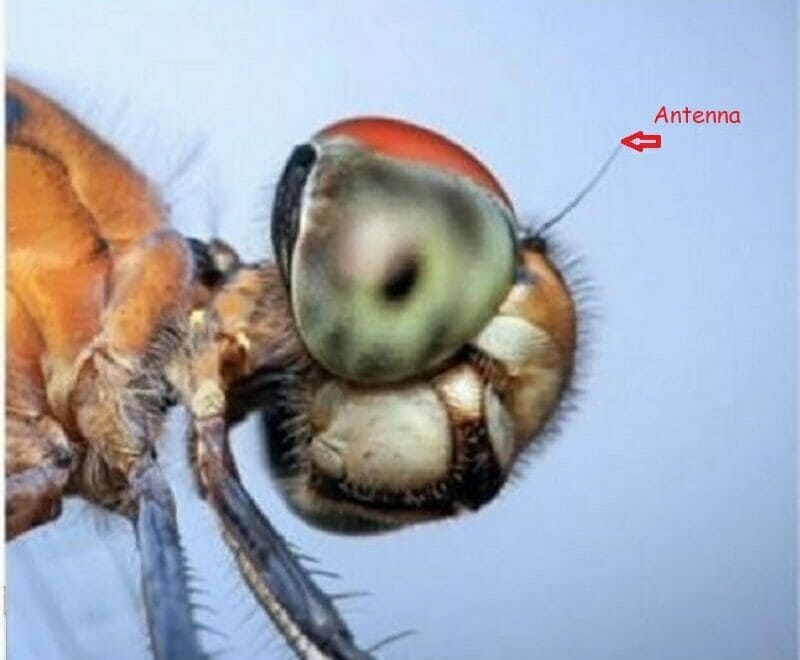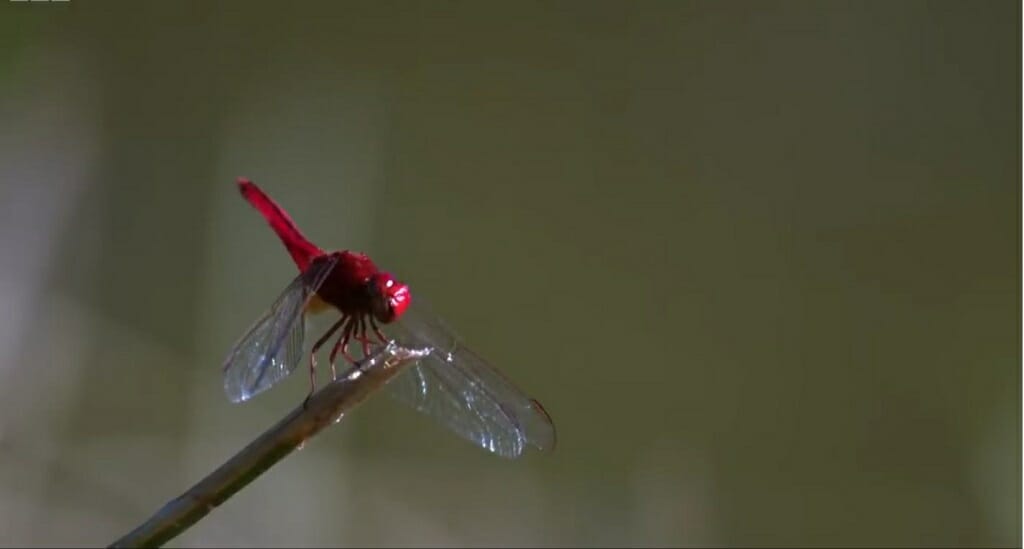With four wings, six legs, and two large eyes, Dragonflies can be considered an amazing creation of nature. But, did you know we can’t categorize Dragonflies as flies? There is no reason to be surprised. They are not flies. However, we can label them as insects. So, today I’m hoping to give you some insights into these truly unique creatures. Do Dragonflies have antennas?
Yes, indeed. Dragonflies have two antennas located near the eyes. These two antennas are tiny and nearly impossible to spot. Dragonflies use these antennas for their sense of smell.
Characteristics of a Dragonfly
The Dragonfly’s head is mostly covered with two huge compound eyes that can identify ultraviolet light. They have long and delicate transparent wings(four). These wings are capable of delivering 50-90 beats per second. (1)
Even though these insects have six legs, they don’t use these legs to walk. Apart from that, Dragonflies breathe using the tiny holes that are located in their abdomen. Most importantly, they have two small antennas near the eyes.
Why Do Dragonflies Need Antennas?
Dragonflies are considered the apex predators of the insect world. If so, they must have good senses. Right? Yes, they do have excellent senses. For instance, they have large eyes that are excellent for detecting any prey. However, Dragonflies do not have the brain structure that is needed to detect the sense of smell like humans or other normal animals. (2)

For the sense of smell, Dragonflies use the antennas. These antennas are known as the setaceous antennae, and it is a unique type of antenna. You can commonly spot them on Damselflies and Dragonflies. However, Dragonflies mostly use their eyesight to catch prey. So, these antennas are small compared to antennas that can be found on butterflies moths, or other insects.

How do the Antennas Work?
Setaceous antennae are equipped with tiny bulbs. These bulbs act as the insect’s nose and are able to recognize smells. Apart from that, these insects use antennas to measure flight and airspeed. So, these antennas help nicely for agile flight.
Life Cycle of a Dragonfly
A dragonfly’s life cycle is a little different compared to other winged insects. They have four stages.
Egg
A female Dragonfly lays around 1500 eggs at once, and these eggs will hatch in a week. Hatching time might vary according to the weather conditions and other factors.
Larva

After a week, a small prolarva will come out from the egg. Dragonfly larvae take around one to two years for their larval development.
Emergence
Dragonflies do not have a pupal stage; this is the final stage of the larva form. They evolve from larva to adult stage.
Adult

Usually, freshly a developed adult Dragonfly has weak flight ability. They last around eight weeks.
Wrapping Up
There is no doubt that the Dragonflies hold a special place among winged insects. Their ability to hunt is greatly improved because of their large eyes, incredible flight skills, and antennas. Besides, these setaceous antennae make Dragonflies one of the deadliest hunters in the insect world.
References
(1) ultraviolet light – https://www.livescience.com/50326-what-is-ultraviolet-light.html
(2) humans – http://humanorigins.si.edu/education/introduction-human-evolution
Video References
BBC Earth
Ruchira Sen

